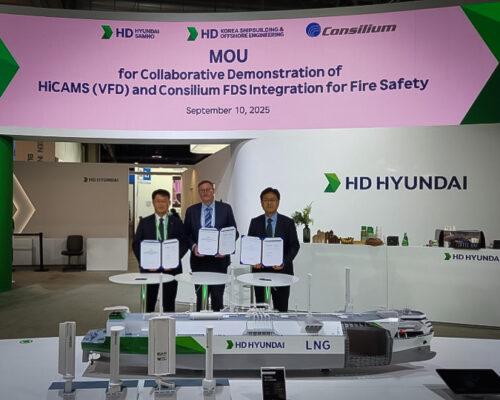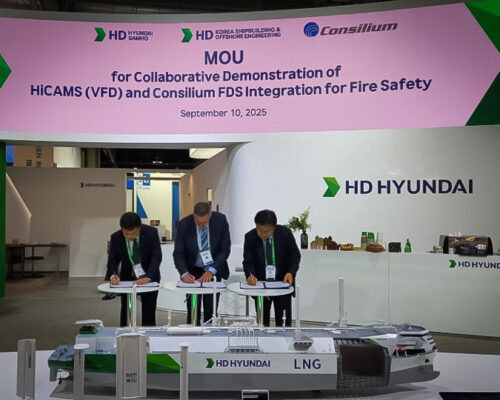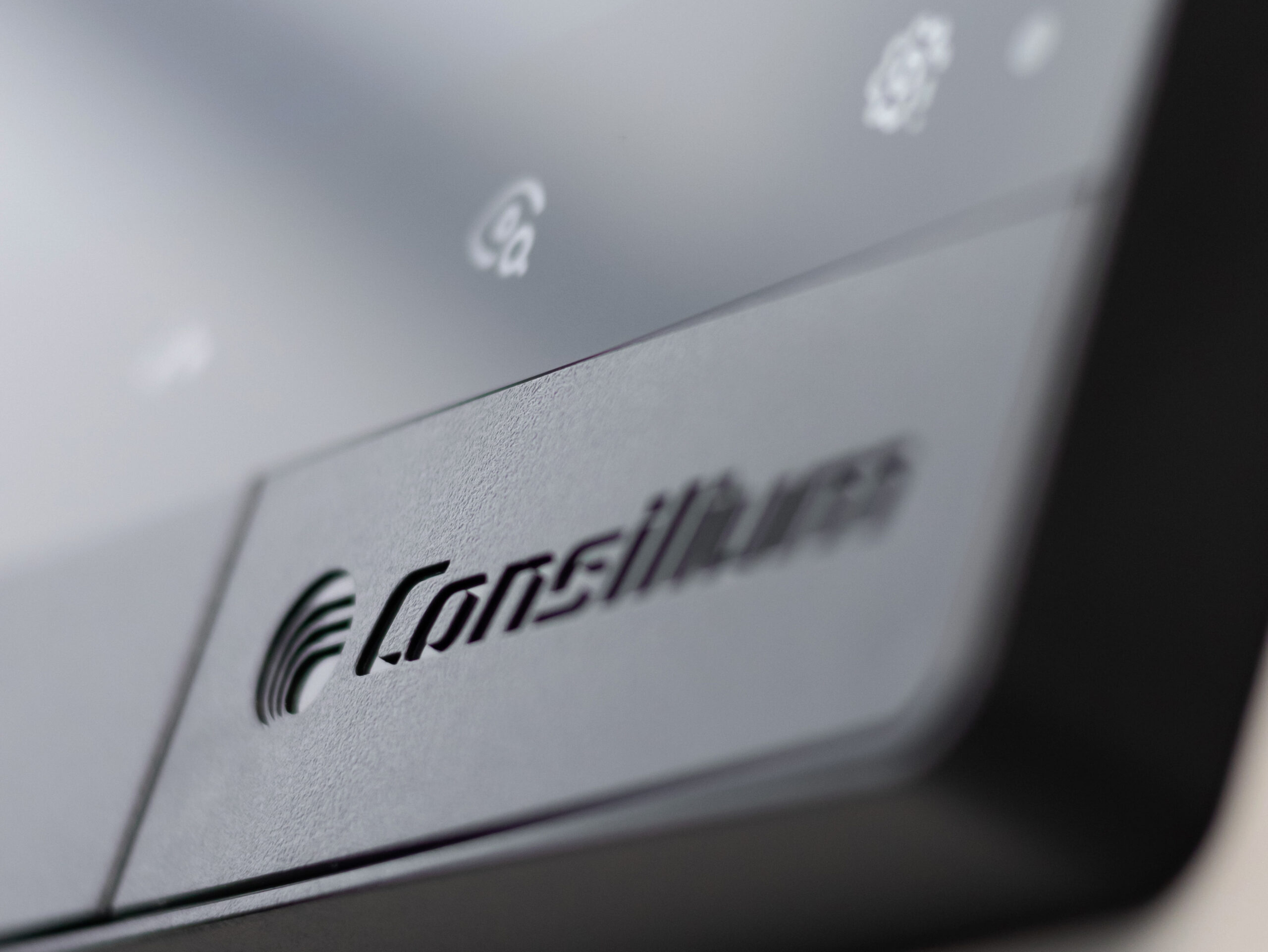Consilium and Hyundai to test AI cameras for fire detection at sea
In a significant step toward enhancing marine safety, Consilium Safety Group and Hyundai Heavy Industries have signed a landmark agreement to explore the use of AI-powered cameras in certified fire alarm systems on ships.
The Memorandum of Understanding (MoU) was formalised at the Gastech exhibition in Milan, and centres on Hyundai’s HiCAMS technology, which uses cameras to identify smoke and flames.
While camera-based detection is emerging in other industries, this initiative is among the first to target marine applications directly.
A pilot test is already underway on the test vessel Sawasdee Sunrise in Korea, where HiCAMS has been connected to Consilium’s Safety Management Interface Graphics (SMiG), focusing initially on smoke and flame detection.
One of the first uses is expected on container vessels. While Consilium’s established Temperature Monitoring System (TMS) tracks heat build-up in containers stored below deck, the HiCAMS technology will monitor cargo stacked above deck for the first signs of smoke.
“There is strong interest in combining proven systems like TMS with new detection methods for areas where additional coverage is needed,” says Thobias Ernfridsson, CTO at Consilium Safety Group. “Working with Hyundai on HiCAMS, a proven video-based fire detection technology, we aim to demonstrate its potential as a key component of certified fire alarm systems for maritime safety.”
The technology’s potential extends beyond container vessels, Ernfridsson states.
“Large, open spaces such as vehicle decks on ferries, atriums on cruise ships, or even shopping malls and warehouses present challenges for traditional smoke detectors, which often only react once smoke has reached ceiling level,” he explains. “Camera-based detection can monitor a much larger volume and provide earlier warnings in such environments.”
The next step for the partnership is to enter a dialogue with the classification society to obtain an Approval in Principle (AIP). This would formally confirm that the technology is viable for certification within a fire alarm system, paving the way for a full proof-of-concept.
The agreement builds on a long-standing relationship between the two industry leaders.
” This is a natural next step, giving us the chance to explore new ways of improving safety together”, he concludes.


Talk safety with us
There are thousands of questions regarding safety. But there are also thousands of answers. Talk safety with us – we are ready when you are.


